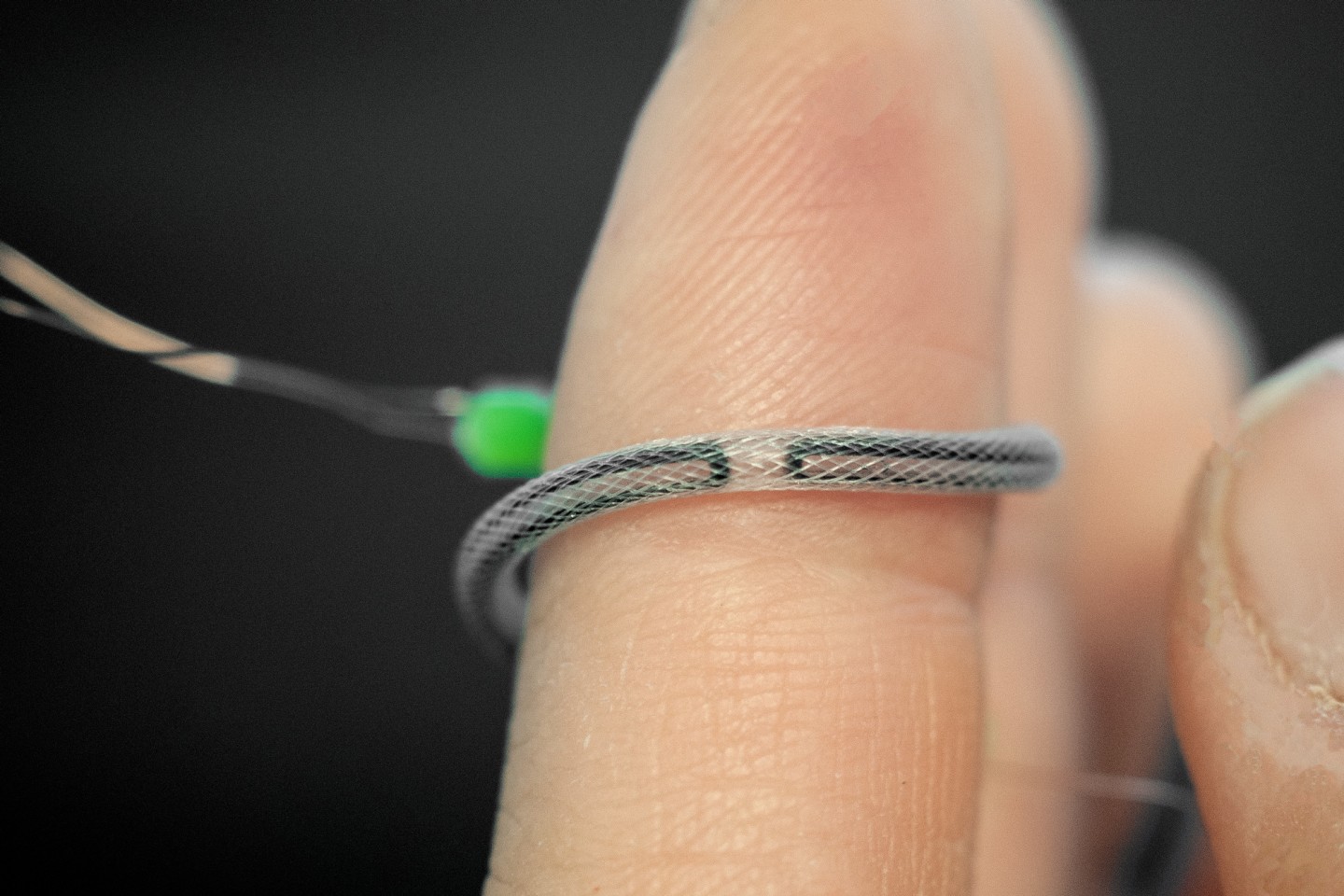Imagine if you were an amateur singer or athlete in training, and you were able to “feel” the manner in which a professional breathes while they’re performing. That’s just one of the potential uses of a new “smart” fiber, which could also have medical applications.
Known as OmniFiber, the technology is being developed by scientists from MIT, Uppsala University, and Sweden’s KTH Royal Institute of Technology.
It takes the form of inexpensive, stretchable, yarn-like fibers with a braided polymer outer sheath, an underlying layer of soft material that detects stretching or compression as a change in electrical resistance, and an inner elastomer tube that contains a fluid medium such as compressed air or water. The fibers are thin and flexible enough that they can be sewn, woven or knitted into sheets of fabric, utilizing existing commercial textile machinery.

MIT
When the wearer of a skin-tight garment made of that fabric breathes – or moves in any other way – the fibers are able to measure the extent and location of that movement. An attached compressor can subsequently replicate that pressure in the fibers, allowing a different wearer to experience the sensation of breathing in the same fashion as the previous wearer.
Additionally, it is hypothesized that clothing incorporating the fibers could help patients recovering from surgery or respiratory illnesses to reestablish proper breathing patterns.
In proof-of-concept tests conducted so far, a corset-like undergarment made of the fibers has successfully been used to monitor and play back the movement of the respiratory muscles in a trained opera singer, while she was singing.
“We eventually were able to achieve both the sensing and the modes of actuation that we wanted in the textile, to record and replay the complex movements that we could capture from an expert singer’s physiology and transpose it to a non-singer, a novice learner’s body,” says Ozgun Kilic Afsar, a visiting doctoral student at MIT. “So, we are not just capturing this knowledge from an expert, but we are able to haptically transfer that to someone who is just learning.”
Plans now call for the OmniFiber technology to be developed further, and to possibly be utilized for movement training in disciplines such as calligraphy or dance. It was presented this week via the online Association for Computing Machinery’s User Interface Software and Technology conference.
Source: MIT
Source of Article